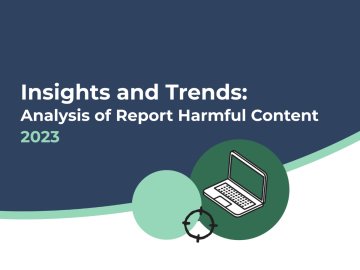A new survey published by Internet Matters has revealed that parents are concerned about the prevalence of devices in family life, and how they could potentially impact the wellbeing of their children.
The third annual Internet Matters survey on "Children’s Wellbeing in a Digital World” highlighted parents' concerns about whether the pervasive use of tech devices is encroaching on family time and causing what is termed as 'screen time strain', which could be detrimental to children’s physical health, sleep, and concentration. Despite these worries from parents, the survey reveals an overall improvement in children’s digital wellbeing.
Find out about the survey’s results, and the support available to help improve young people’s digital wellbeing.
Family Time and Life Online
The latest survey reflects the views of 1,001 UK children aged between 9 and 16 and their parents. The report, which tracks the influence of digital technology on various aspects of children's well-being, highlights both positive outcomes and areas of concern. One notable trend is the increasing consumption of digital content, leading to a shift in attention from family activities towards individual screen time. The survey reveals the growth of this trend, with 31% of respondents admitting to spending more time on their devices than engaging in activities together as a family, up from 20% in 2022.
Physical Impact of Time Online
Concerns about the physical impact of prolonged screen time have also escalated, with approximately 63% of parents believing that their children’s health is negatively affected by online activities, while worries about screen time disrupting sleep have risen to 57%. Additionally, almost a quarter of children report experiencing adverse physical effects, ranging from fatigue to concentration difficulties and vision problems.
Online Harms
The survey also reveals concerns about online harms, particularly for young girls, with two-thirds of children reporting harmful experiences online. Additionally, almost half of 15-to-16-year-old girls claim to have encountered strangers attempting to contact them, up from 30% in 2022.
Overall, children did report feeling safer online, with 81% expressing a sense of safety most of the time. For help reporting online harms, visit Report Harmful Content.
Digital Wellbeing
The results also highlight that many children’s digital wellbeing is improving. Responses from children suggested that they are seeing increased benefits to their online activities, such as feeling more confident, creative and empowered.
Additionally, children also reported feeling increasingly happy online, with two-thirds of children responding that spending time online made them feel mostly happy. Alongside this, many children (75%) considered technology and the internet important to their independence, up from 69%.
Parental Supervision
Whilst parents remain concerned by children’s online usage, the survey also highlights positive developments. Parents are becoming more proactive in monitoring and regulating their children’s online activities, with 21% managing their children's usage extensively. Communication between parents and children about online experiences has also increased.
Our Social Media Checklists also identify this improvement in parental supervision, highlighting new and updated supervision settings from social media platforms.
Find out more about Digital Wellbeing
As the latest data reveals, helping to develop young people’s digital wellbeing remains crucial to supporting their online experiences. With more and more people being online, digital wellbeing, can affect many things, such as how long we spend on devices, how we behave online and how we interact with others. It can also contribute to other areas such as our overall physical and mental health.
SWGfL provides plenty of information, guidance and resources to help teachers, parents and professionals support the digital wellbeing of children and young people. You can access support by visiting our Digital Wellbeing Hub.






